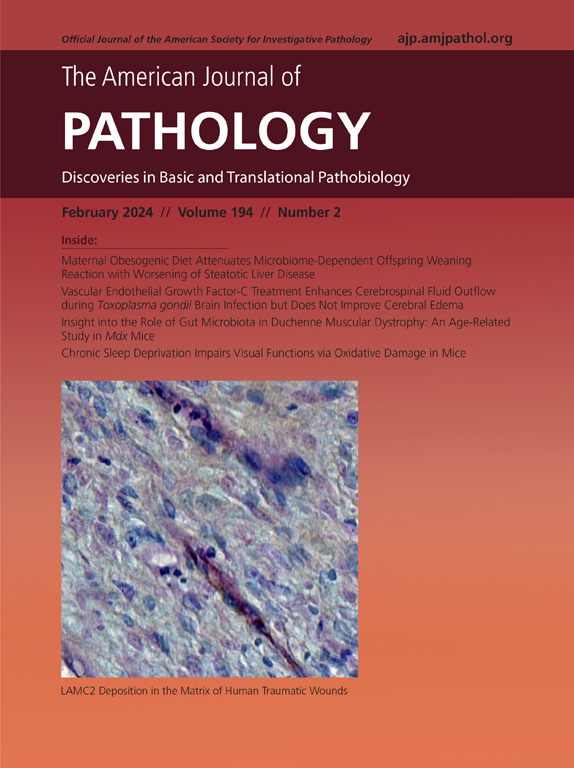Ovarian Cancer Detection in Ascites Cytology with Weakly Supervised Model on Nationwide Data Set
IF 3.6
2区 医学
Q1 PATHOLOGY
引用次数: 0
Abstract
Conventional ascitic fluid cytology for detecting ovarian cancer is limited by its low sensitivity. To address this issue, this multicenter study developed patch image (PI)-based fully supervised convolutional neural network (CNN) models and clustering-constrained attention multiple-instance learning (CLAM) algorithms for detecting ovarian cancer using ascitic fluid cytology. Whole-slide images (WSIs), 356 benign and 147 cancer, were collected, from which 14,699 benign and 8025 cancer PIs were extracted. Additionally, 131 WSIs (44 benign and 87 cancer) were used for external validation. Six CNN algorithms were developed for cancer detection using PIs. Subsequently, two CLAM algorithms, single branch (CLAM-SB) and multiple branch (CLAM-MB), were developed. ResNet50 demonstrated the best performance, achieving an accuracy of 0.973. The performance when interpreting internal WSIs was an area under the curve (AUC) of 0.982. CLAM-SB outperformed CLAM-MB with an AUC of 0.944 for internal WSIs. Notably, in the external test, CLAM-SB exhibited superior performance with an AUC of 0.866 compared with ResNet50's AUC of 0.804. Analysis of the heatmap revealed that cases frequently misinterpreted by AI were easily interpreted by humans, and vice versa. Because AI and humans were found to function complementarily, implementing computer-aided diagnosis is expected to significantly enhance diagnostic accuracy and reproducibility. Furthermore, the WSI-based learning in CLAM, eliminating the need for patch-by-patch annotation, offers an advantage over the CNN model.

基于全国数据集弱监督模型的卵巢癌腹水细胞学检测。
传统的腹水细胞学检测卵巢癌的灵敏度较低。为了解决这一问题,本多中心研究开发了基于斑块图像(PI)的全监督卷积神经网络(CNN)模型和聚类约束注意多实例学习(CLAM)算法,用于利用腹水细胞学检测卵巢癌。共收集良性肿瘤356张,肿瘤147张,其中良性肿瘤14699张,肿瘤pi 8025张。此外,131例wsi(44例为良性,87例为恶性)用于外部验证。开发了六种CNN算法,用于使用pi进行癌症检测。随后,提出了单分支(CLAM- sb)和多分支(CLAM- mb)两种CLAM算法。ResNet50表现最好,准确率为0.973。在解释内部wsi时,曲线下面积(AUC)为0.982。在内部wsi中,CLAM-SB的AUC为0.944,优于CLAM-MB。值得注意的是,在外部测试中,CLAM-SB的AUC为0.866,优于ResNet50的0.804。对热图的分析显示,人工智能经常误解的案例很容易被人类理解,反之亦然。由于人工智能和人类的功能互补,实施计算机辅助诊断有望显著提高诊断的准确性和可重复性。此外,CLAM中基于wsi的学习,消除了对逐块标注的需要,比CNN模型更有优势。
本文章由计算机程序翻译,如有差异,请以英文原文为准。
求助全文
约1分钟内获得全文
求助全文
来源期刊
CiteScore
11.40
自引率
0.00%
发文量
178
审稿时长
30 days
期刊介绍:
The American Journal of Pathology, official journal of the American Society for Investigative Pathology, published by Elsevier, Inc., seeks high-quality original research reports, reviews, and commentaries related to the molecular and cellular basis of disease. The editors will consider basic, translational, and clinical investigations that directly address mechanisms of pathogenesis or provide a foundation for future mechanistic inquiries. Examples of such foundational investigations include data mining, identification of biomarkers, molecular pathology, and discovery research. Foundational studies that incorporate deep learning and artificial intelligence are also welcome. High priority is given to studies of human disease and relevant experimental models using molecular, cellular, and organismal approaches.

 求助内容:
求助内容: 应助结果提醒方式:
应助结果提醒方式:


